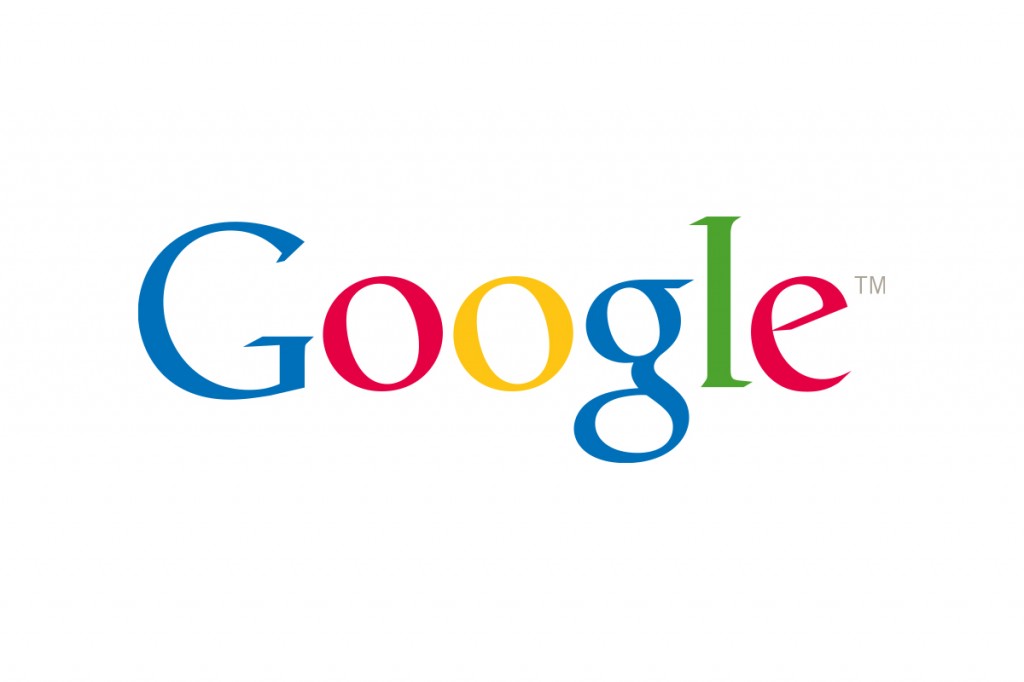Category: Content marketing
Content marketing strategy is a massive buzz phrase thrown about by marketing professionals globally but what does it actually mean and how should companies deal with it?
Does Social Media improve your Search Ranking?
Does Social Media Improve Your Search Ranking
Content
Images And Image Based Social Media
2 email marketing techniques that deliver better results
What are the best email marketing techniques to deliver results? The debate goes on as to how to gain maximum effectiveness from email marketing. There is evidence to show that email marketing works best in both pre-sales and after sales strategies. The key to the most effective email marketing is the timing and the content.
Today’s world is very much about service and content on demand. Personalisation is also high on the agenda for many marketing managers (although this may be misunderstood). I did read recently that subscribers and consumers have become very accustomed to personalisation and are starting to question the safety of their data.
So how do personalised email marketing strategies work most effectively?
How can you maximise engagement and return on investment without spooking your subscribers?
It’s no secret that most email systems will enable you to embed subscriber information into the body of the emails you wish to send out. The trick here is not to overuse client information. Use it once but then only use it when it’s relevant to the content of the message. So what are the real secrets?
What is the best timing for email marketing?
Most organisations use email marketing. The level of sophistication is where the most difference is found.
Ok, in order to get timing and content perfect, you need your subscribers to tell you what they want and when. The problem is with thousands of subscribers, this may seem like an impossible issue to resolve. Not so!
Once you appreciate the triggers that you can use to automate communication processes and database updates, the value of automation becomes more obvious. Let’s explain this in two parts; firstly, triggers and secondly, actions.
Email marketing techniques #1 – Automation
Triggers
Not only are there obvious triggers within your business such as a customer placing an order but there are a multitude of other triggers which you may not even be aware you can track and utilise. Sophisticated email systems (forget the free ones) have the capability to covertly track subtle interactions, and for that matter lack of interactions with your emails. You may be familiar with the standard information such as open rates and bounces but this takes that email marketing technique a step further. The smarter systems can monitor click throughs. As a report, this information may be useful BUT there’s a better way to use it.
Actions
The question now comes as to what SHOULD happen when a subscriber interacts with your information? Dependent on the trigger you may want a number of different actions. Whether you simply want the database to capture the subscriber’s preference information, you wish to send a follow up email, you’d like your sales team to be notified or even a whole new set of emails is triggered, all of this is possible.
How you set your actions need not be overly sophisticated , although it can be.
The client’s automation was set up to deliver instant notifications to the sales team. The notifications were pre-populated with the subscriber’s information, also detailing their specific interaction.
232 red hot leads were generated within the space of 2 hours for a total investment of less than £1000.
With an average sales value of £3000, a conversion rate of 1% would generate revenue of over £11,000.
These figures become even more attractive as you increase the broadcast volumes. If, for example, the subscriber database was increased to a number of 400,000, the set up and distribution costs would be less than £20,000 but the returns would be in the region of £104M.
In a recent email broadcast.
4000 contacts delivered an open rate of 29% (1160)
and a click through rate of 20% (232).
The real beauty of email is its low distribution cost and instantaneous nature. Scalable email communications need automation and with all the triggers available, delivering comprehensive automated email communication has never been more straight forward. The real key is knowing where email marketing will deliver you best value.
Conditional marketing is the use of preference information to determine the content presented to the subscriber.
Email marketing techniques #2 – Conditional content
This email marketing technique needs a little explanation. If, for example, a travel company’s database showed a subscriber to have a preference for city breaks, the system could use that information to populate the content of that particular subscribers message to be specific to city breaks.
Conversely, a subscriber showing preference toward long haul breaks could have their message content determined to suit them. To use this to best effect, you need to rely on automation and let your subscribers determine the information they want.
Conclusion
Email marketing techniques are used by many organisations but by using the above 2 secrets, the more advanced organisations are gaining business critical edge over their competitors. The examples used are very basic are purely illustrative of the types of functions an organisation may wish to emulate.
To really capitalise on these secrets, an organisation should embrace the technology and apply it in all relevant places.
Find out more about how you can take advantage of these email marketing techniques.
By Ryan Mullins
Marketing Automation – Improve Your Sales Process And Increase Profit.
Would you like to increase sales, improve awareness of your brand, or improve your sales and marketing activity in another way. Are you restricted by budget and time?
Marketing Automation will save you time, money & improve results. Here are just a few reasons why:
[unordered_list style=”bullet”]- Automating your sales process means that your business development strategy is always carried out. No more excuses that you ran out of time to follow up leads.
- With marketing automation you can make cold calling a thing of the past. You will automatically know who is interested in your company based on their interactions with your email. That not only saves time when making sales calls, it also gives your sale team a focus and a much better chance of getting the result they are looking for.
- You can tailor your messages to prospects, existing customers or previous clients so that they receive relevant information from you. Making sure the right prospects get the right information increases your chances of getting the result you need.
- Automatically following up initial enquiries or chasing previous customers means your company will never miss a sales opportunity. Even if an email isn’t read, it is very likely that they will have still seen your brand name appear in their inbox, keeping your company name in their mind.
SAVE TIME
Sales tasks are automatically triggered and followed up.
SAVE MONEY
Reduce the cost of sale by reducing staff costs
GET RESULTS
No matter how busy your day has been your business development tasks will always be carried out, improving your sales figures.
Marketing Automation helps all types of businesses and organisations to improve sales, profits, retention whilst also reducing costs and effort.
By Lorraine Mullins
Successful content marketing: 5 rules of brilliant engaging content
Successful content marketing needs brilliant, engaging content.
Every single one of your competitors that takes their marketing seriously is now working on their content marketing strategy. As a result, the competition is hottin g up and you need to really get it right if you want to stand out from the rest. This blog post is here to help you to get it right with some simple steps.
Content marketing is recognised as being the way to draw traffic into your site. How do you make your content brilliant and engaging?
Content is the king of todays media world. Consumers crave information. The issue for businesses is creating content that their target audience wish to read. Emails get binned so very easily; but we all still read a few. We read articles when we need advice or we are referred by our peers. What is it that make she difference between a great article we share and all those we ignore?
1. Relevance
Why should your audience care? Does your content make any difference to them? If the answer is no or not sure, you’re missing something. It may be something as simple as an introduction that makes your content relevant. It may be that you need to educate your audience to make it relevant.
2. Attractiveness
So, going beyond relevance, this is the question of whether your audience really cares. Lets face it, even when we should care, sometimes we don’t. Part of that is the packaging. Whether it be the way a message is delivered, how it’s dressed up, what it looks like or even whether it is a path to eternal happiness. How attractive is your message? Remember, attractiveness is in the eye of the beholder, what you consider attractive is not always the same as your target audience. Use focus groups, conduct market research and make sure you know what your audience desires before you begin. It will make the journey easier, less painful and more rewarding.
3. Emotion
Once you’ve caught the right people’s attention, you need to make sure your message is memorable. What makes memorable? For me, it’s inspiring emotion, it’s about making someone, the reader, feel. The emotion you inspire is important and fairly obviously it wants to be a positive message. In order to draw out emotion, you may need to provoke, you may need to cite examples or tell a story. Being brutally honest, if your content doesn’t inspire emotion, it will get lost among the world of mediocre. Take your time, tap into the nerve centre of your audience; you’ve worked hard to gain their attention, you just need to do enough to be remembered too. Be daring, be bold, gain criticism and most importantly, gain an audience who are touched by your message.
4. Convenience
With the modern world being the way that it is, consumers want everything ‘on demand’. People have less and less patience, they want to be able to access information on their terms, in their time, at their convenience. Remember, this is not about you, it is not about what you are able to provide, it’s about your target audience, it’s about their routines, their convenience. If your audience wants film and you release hard backed books, take a guess at the outcome. If, however, you provide relevant, attractive and emotive content to your consumers convenience, you have a much greater chance of success. If your target audience prefers SMS once a week, that’s what you should deliver! Make it easy, deliver it in the way they want it and they expect it. Anything less and you may be wasting your efforts entirely. Do the very best you can!
5. Shareability
If you’ve managed to achieve the success of getting someone to read and digest your content, the supreme success comes in getting them to recommend it to others by sharing. Remember, people won’t joust share anything. Even recommending a holiday read can be challenging so recommending content that may make a professional difference to someone needs to be well founded. Assuming you’ve achieved the first 4 points, it may be as simple as having ‘share this’ buttons, you may need to ask for a referral. Whatever you need to do to get the referral, do it, there is nothing as successful in conversion as personal testimonials. Another thought to leave you with is the use of incentives to gain the referral. Be creative, stimulate desire and gain recommendations from your target audience. Achieve these and you’ll be we’ll on your way to a rewarding sales channel with high conversion ratios.
Finally, remember your call to action!
What do you want your recipients to do? Contact you? Share with a friend? Comment?
Make sure you tell them!
If you follow these simple steps for creating more successful content marketing you’re likely to stay a step ahead of your competition and convert more of those all important subscribers.
By Ryan Mullins
Google hack – how to achieve page 1 ranking
How do you get your website onto page 1 on google and other search engines?
The secret to achieving a Google page 1 ranking
Achieving a Google search page 1 ranking has swiftly become the Holy Grail for online businesses—after all, how many punters ever bother to go onto the second page of a search? And reaching this nirvana has spawned a whole new industry of SEO consultants and experts who would have you believe there is some arcane and complex magic for nudging your way up the search results.
But…getting onto page 1 for a Google search isn’t difficult at all!
Yes—that’s true, despite what SEO and internet gurus might have you believe. It’s simply a matter of following a specific formula and being mindful of competition for the phrases you want to rank for. And we’re willing to share the secret with you, so you can reconfigure your pages to achieve the Google, Bing or Yahoo search ranking you want.
Just a word before you start…
Take this example: a local insurance broker approached us and said, “We want to appear on page 1 of Google.”
We asked them what search term they wanted to achieve page 1 for.
“Insurance!” they said, naturally enough.
We had to ask, “How deep are your pockets?”
With the pressure of online competition, not deep enough! And this is the root of the problem. This company, by wanting to rank on page 1 for “insurance” was setting itself up in competition with all the hundreds of thousands of other insurance companies all over the world. And although “insurance” is an applicable search term for this small local business, it does nothing to set them apart from the rest of the competition.
The problem is, how do you rank on page 1 without diluting your message?
It’s all to do with the search terms you choose. If you pick a high competition key phrase that attracts a huge volume of searches, you’ll find it nigh on impossible to achieve a page 1 rank on Google or any of the other search engines. Not totally impossible—but if you do get to the top, your competitors will be snapping at your heels and you’ll find it incredibly difficult to maintain your position.
So how can you achieve a page 1 ranking?
Here’s our guide to raising your page up the search engine ranks.
- Research your keywords to differentiate your business. For example, if you’re an insurance broker in Bedford, specialising in commercial risks, don’t attempt to be page 1 for “insurance”. You’ll be better served by ranking for “commercial insurance Bedford”.
- Understand search volumes. Once you’ve identified some possible search phrases for your business, you need to be mindful of how many people are using them. After all, being number 1 for a phrase that nobody is using isn’t going to make you particularly discoverable.
- Identify your site’s key pages. There will be certain pages on your site that are valuable to you and your customers. You need to know which pages these are and what information your visitors are looking for. Use analytics to identify your top ranking pages.
- Optimise your site to make it easier for Google to read. Google isn’t human and it needs information to be configured in a specific way in order to find it. If you leave out what it’s looking for, your pages won’t rank. Every single page needs to contain the following information:
- Key phrases that are specific to the page
- META Title – this needs to contain the key phrase(s)
- URL – must contain the key phrase(s)
- META Description – also needs to contain the key phrase(s)
- The first, second and final paragraphs must all feature the key phrase(s)
If this still seems a little daunting or if you simply haven’t the time to review all the pages on your site, we can help you to gain a page 1 ranking for Google and other search engines, such as Bing and Yahoo. Our first step is to assess your site and make a recommendation on how much work will be required. Then you can decide whether you’d like us to transform your search engine rankings.




